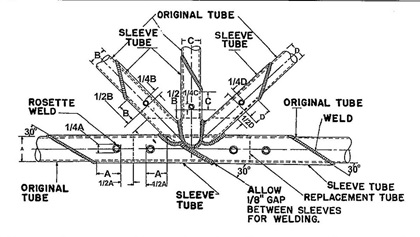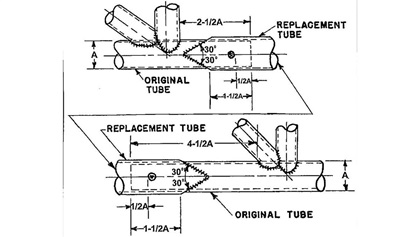Airframe: Totally tubular, man
Why new airplanes are still being built out of steel tubing

Photography by the author
Next, he pushed hard with his left hand and pulled with his right hand. As an airframe and powerplant mechanic with scant experience in the world of tube-and-fabric airplanes, my eyes popped open when I saw the stabilizer twist a little.
“She gets out of rig once in a while and a good twist gets her back to flying square,” explained the CFI as he brushed past me, heading into the heated hangar.
I had spent the previous decade working on a flight school diet of aluminum airframes: Cessna 150s, 172s, 182s, Beech Bonanzas, and a variety of others—airplanes the tube-and-fabric pilots call “spam cans.” I had never even considered twisting a vertical stabilizer to right an out-of-trim airframe. Nor will any mechanic ever find that “fix” in an aluminum airframe manufacturer’s service manual.
Beech, Cessna, Piper, and other aluminum airframes are of semi-monocoque construction. This structure uses an internal skeleton of frames, bulkheads, and stringers to provide strength and rigidity. A semi-monocoque fuselage is strong because of its shell-like structure comprised of many relatively thin parts securely connected by rivets, instead of a relatively small skeleton of steel tubes.
Think of it like this: Tube-frame airplanes are strong because of a skeleton; an aluminum-frame airplane is strong because of its shell. Then there’s Mooney; its airframe construction consists of a welded steel tube forward fuselage and a semi-monocoque rear fuselage. The aluminum forming the outer shell of the forward fuselage is for aerodynamics; it is not load bearing.

The tubing in a Piper
Clyde Smith Jr., aka “The Cub Doctor” (cubdoctor.com), said that Piper always used 1025 mild steel tubing aft of the baggage section in every tube-frame airplane it built right up until it stopped production in 1982.
Two alloys of steel aircraft tubing are used in general aviation aircraft: SAE 1025 and SAE 4130. 1025 is a plain steel with only carbon as its alloying element; technically it’s a “low hardenability carbon steel with low tensile strength;” 4130, often called chrome moly tubing, also contains molybdenum and chromium as strengthening agents. 4130 is stronger in shear strength, fatigue strength, and hardness; 1025 has better rust resistance. Both alloys are very easy to weld.
When a rust-weakened tube or cluster of tubes is damaged because of rust, an accident, or ground incident, it’s relatively easy to peel back the fabric covering and cut out the damaged area.Why did Piper continued to use 1025 tubing? Smith explained that it was less expensive, easier to bend, and the greater strength of the 4130 was not required aft of the baggage area. That helps explain why the vertical stabilizer may need to be “tweaked to trim” in Piper and other early tube-style airplanes.
Today, companies such as Aviat Aircraft and CubCrafters that build tube-type airframes use 4130 tubing.
Tubing repairs are cut and splice affairs
It’s not uncommon to find rust-weakened sections in the lower aft tubes of older tube-frame airplanes, or in tube-frame airplanes that are flown on floats.
Pushing the tip of an ice pick against the tube is a fool-proof detection method. When a rust-weakened tube or a cluster of tubes is damaged because of rust, an accident, or ground incident, it’s relatively easy to peel back the fabric covering and cut out the damaged area.
Then, using procedures described and pictured in detail in Chapter 4 of Advisory Circular AC 43.13-1B, the fuselage is returned to full strength by splicing in and welding up the new tubes. Repairing the fabric is not a complicated process, but like other tasks, experience is the key to creating a hard-to-see patch repair.
Repairing a damaged section of an aluminum aircraft will require the careful removal and replacement of a large number of rivets, high-strength fasteners, or bolts. If the damaged skin cannot be repaired or locally fabricated using sheet stock of the correct alloy, then the replacement part must be ordered from the factory or an aftermarket supplier, if one has been approved. If an approved replacement part is not available, it must be manufactured under the owner-produced-parts rule. This can be a lengthy and expensive process.
In most cases, it’s much easier to repair damage to an airplane with a steel tube frame than it is to repair an aluminum fuselage of semi-monocoque construction.
Steve Ells is a freelance aviation writer, pilot, and A&P mechanic based in Paso Robles, California.




